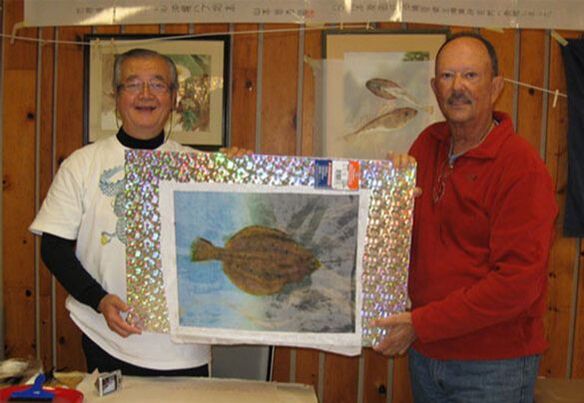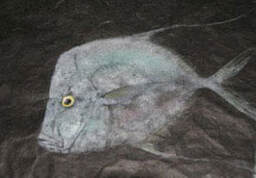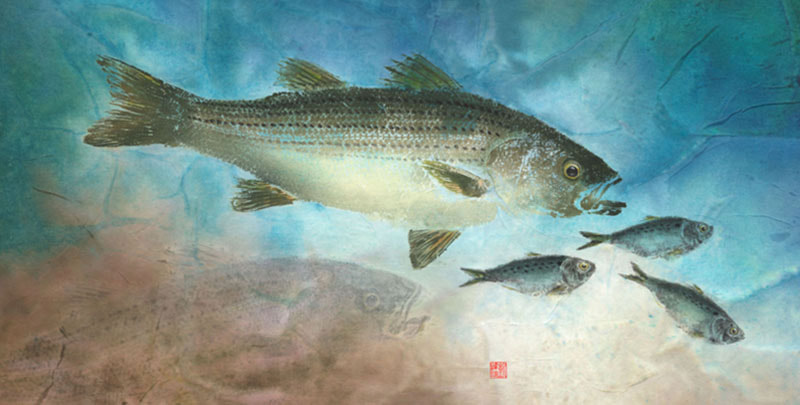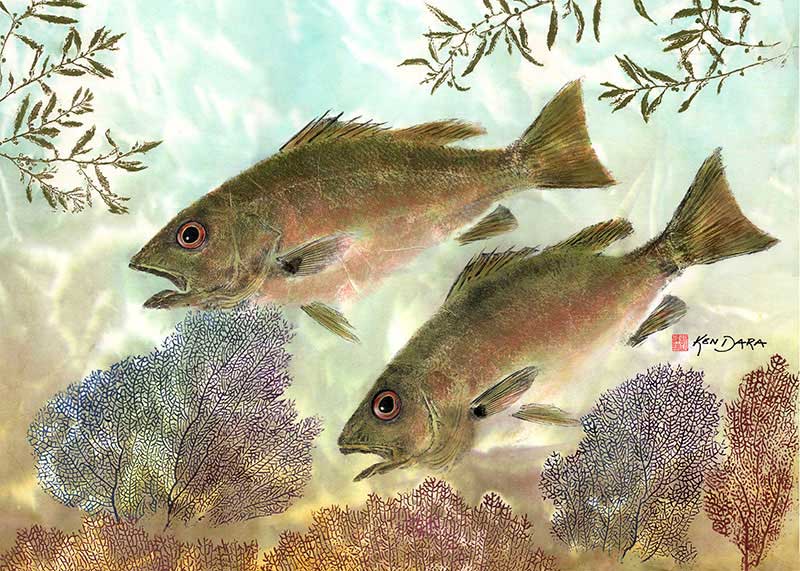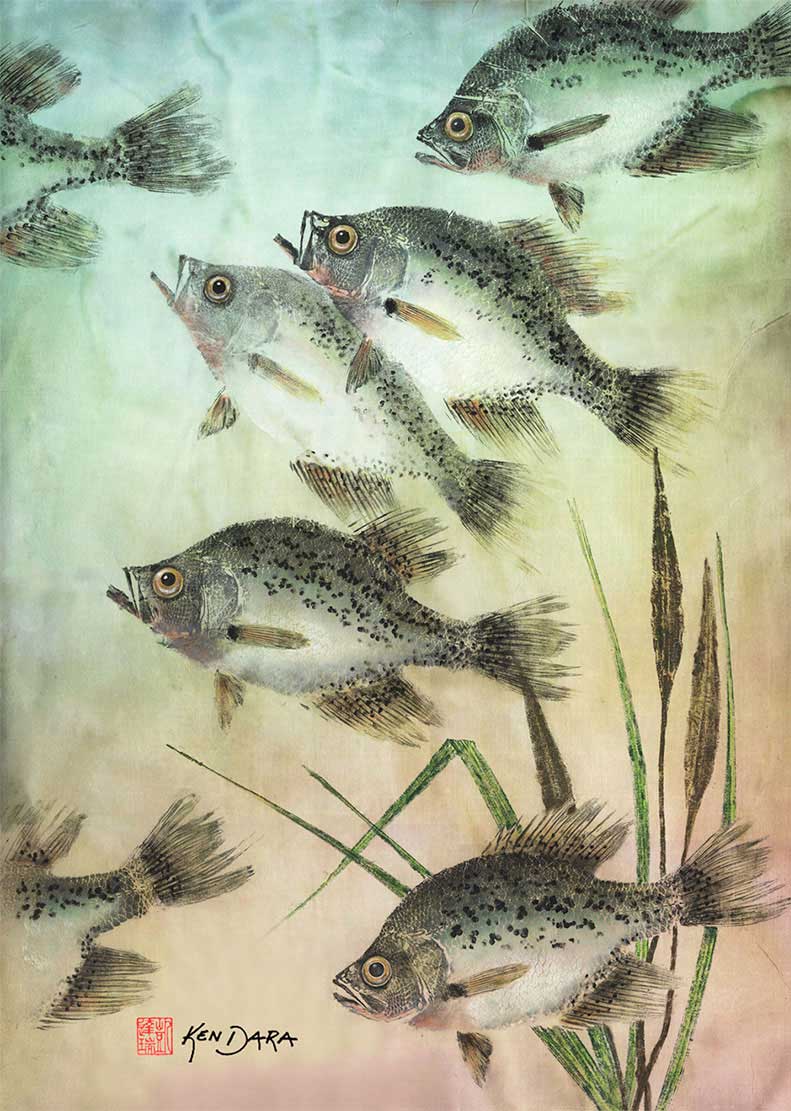Gyo-translates as Fish.
Taku-translates as impression or rubbing.
Gyotaku began in Japan during the 1800’s as the method used by fishermen to record the size and species of their prized catch.
The fish caught was cleaned on the outside and positioned as it would appear in life. Its detailed image was obtained
by carefully pressing rice paper onto the fish covered with ink, where the blank eye area remained was hand painted.
Due to the aesthetic quality of the work, Gyotaku developed into an art form.
The fish caught was cleaned on the outside and positioned as it would appear in life. Its detailed image was obtained
by carefully pressing rice paper onto the fish covered with ink, where the blank eye area remained was hand painted.
Due to the aesthetic quality of the work, Gyotaku developed into an art form.






